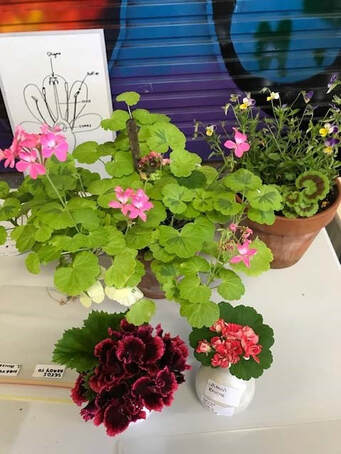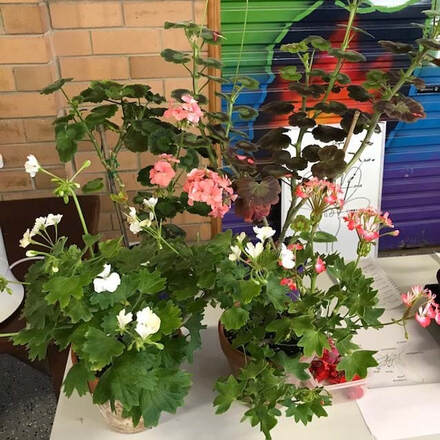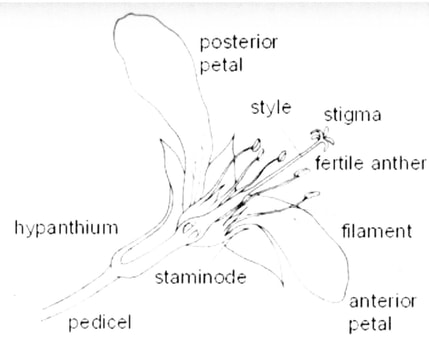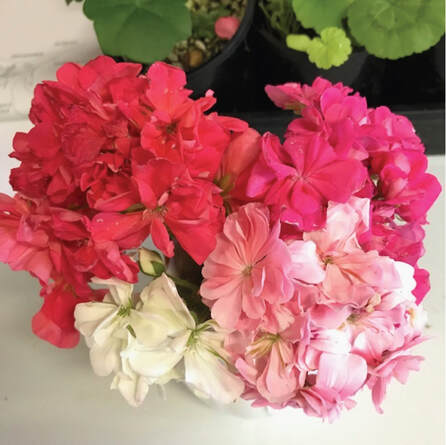Hybridising Pelargoniums and growing from Seed
|
It will take around six months to go from seed to flower. I also drop seeds into flowerpots. It’s a great way of having a great display and they love to be planted with other plants.
You can basically breed any variety except for one. The one variety you can’t breed from is a rosebud zonal and that is because, if you stripped all the petals off the rosebud zonal there are no breeding parts of the flower. Rosebud zonals are sterile. I have found that Fibrex in the UK supply good quality seed. |
|
When I plant the seed I very lightly cover it with only a few millimetres of soil. Place it just under the top layer of the soil.
The mix I use is exactly the same as I use for growing my normal plants and that is Premium Potting Mix and perlite (20%). Seedlings like a light liquid fertiliser. I use Seasol to just make them grow a bit faster. I have an area that is fully enclosed with shade cloth and it has a door on it and that means that the bees can’t enter the area. But I also have an open garden area and some of my best flowering results have been from those random bee fertilised ones. Some people use little tomato type bags however you don’t want moisture around the seed when it’s forming as grey mould can occur and the seeds don’t ripen. The plants will have attributes from the seed parent but not the pollen parent. They will be similar, but they will never be identical. The genetic makeup of your plant will be unique and you can then name your new plant. At about six months of age, you can start taking cuttings and spreading it around. You can register your plant but most people don’t register their plants |
|
My plants carry the prefix Spencer. It’s good to have a prefix, because if you breed a few then everyone can recognise straight away that it’s one of yours. It’s a good idea to grow the plant through two flowering seasons, eg two Springs. I discard probably 80% of my plants. By discard I mean that I just plant them in the garden and forget about them. Sometimes I throw them in the bin if they are ugly or boring or exactly like the seed parent. You would only name something that you are proud of, that’s really different, that adds value to the current pool of pelargoniums. |
|
The plants always develop towards the seed parent (mother)plant. Probably 30/70.
For example, if you wanted to breed doubles, you’d be better off breeding with the double flower as the seed parent. The father is the pollen parent. When you are fertilising a tulip variety you need to remove those petals to fertilise the stigma. When you are crossing the two it’s a really good idea to think what you want to improve upon with your seed parent. For example I often breed for a coloured leaf (these are my favourite variety). But lots of coloured leaved plants are very leggy. So, a good cross would be a miniature or dwarf to develop that compact shape.” |





